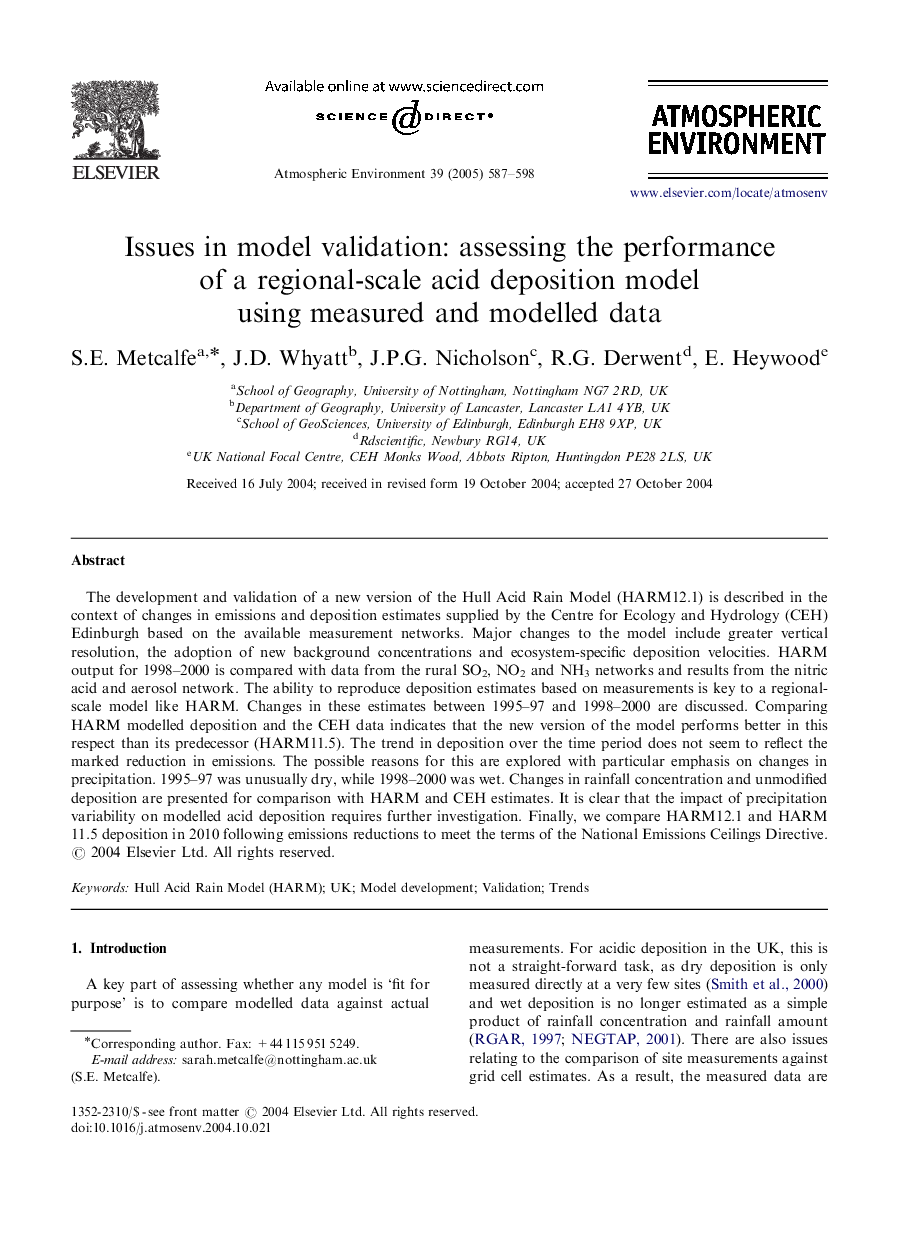| Article ID | Journal | Published Year | Pages | File Type |
|---|---|---|---|---|
| 9458725 | Atmospheric Environment | 2005 | 12 Pages |
Abstract
The development and validation of a new version of the Hull Acid Rain Model (HARM12.1) is described in the context of changes in emissions and deposition estimates supplied by the Centre for Ecology and Hydrology (CEH) Edinburgh based on the available measurement networks. Major changes to the model include greater vertical resolution, the adoption of new background concentrations and ecosystem-specific deposition velocities. HARM output for 1998-2000 is compared with data from the rural SO2, NO2 and NH3 networks and results from the nitric acid and aerosol network. The ability to reproduce deposition estimates based on measurements is key to a regional-scale model like HARM. Changes in these estimates between 1995-97 and 1998-2000 are discussed. Comparing HARM modelled deposition and the CEH data indicates that the new version of the model performs better in this respect than its predecessor (HARM11.5). The trend in deposition over the time period does not seem to reflect the marked reduction in emissions. The possible reasons for this are explored with particular emphasis on changes in precipitation. 1995-97 was unusually dry, while 1998-2000 was wet. Changes in rainfall concentration and unmodified deposition are presented for comparison with HARM and CEH estimates. It is clear that the impact of precipitation variability on modelled acid deposition requires further investigation. Finally, we compare HARM12.1 and HARM 11.5 deposition in 2010 following emissions reductions to meet the terms of the National Emissions Ceilings Directive.
Keywords
Related Topics
Physical Sciences and Engineering
Earth and Planetary Sciences
Atmospheric Science
Authors
S.E. Metcalfe, J.D. Whyatt, J.P.G. Nicholson, R.G. Derwent, E. Heywood,
